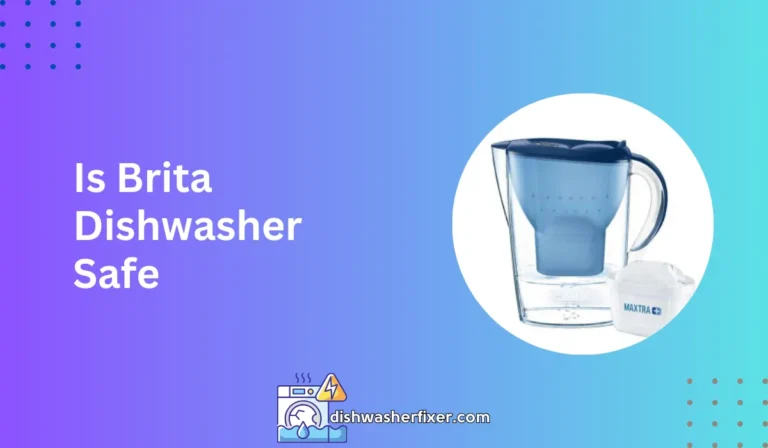How to Operate Dishwasher: A Step-by-Step Guide for Beginners
To operate a dishwasher, load dishes into the racks, add detergent to the dispenser, close the door, select the desired wash cycle, and press start. Ensure dishes are properly spaced for optimal cleaning.
Preparing Your Dishwasher for Use

Loading the Dishwasher Correctly
Ensuring your dishes come out clean starts with how you load them. Place plates, bowls, and other items facing inward towards the spray arms.
Glasses and cups should go on the top rack to prevent water from pooling on the bottom.
Utensils need their own space in the cutlery basket, handles down for safety and cleanliness, except for knives which should be placed handles up.
Adding Detergent and Rinse Aid
Choosing the right detergent is like selecting the correct size of binoculars for birding; you need the right tool for the job.
Powders, liquids, and pods work differently, so select a detergent that suits your washing needs and dishwasher type.
Fill the dispenser compartment with the recommended amount of detergent. Do not overfill, as this can lead to residue on your dishes.
Rinse aid is the secret to spotless dishes. It prevents water from forming droplets that can dry into spots or streaks, much like how the right size braid for a 2500 reel helps in smooth fishing.
Fill the rinse aid dispenser according to the manufacturer’s instructions. If your dishes are coming out spotty, check the rinse aid level and refill as necessary.
Operating the Dishwasher

Selecting the Right Wash Cycle
Modern dishwashers offer a variety of cycle settings to tackle different types of loads. Just as you would choose the appropriate sized hole saw for a ceiling box, it’s important to match the cycle to the load.
A heavy-duty cycle is perfect for pots and pans, while a gentle cycle is better for delicate glassware.
Some dishwashers have eco-friendly options that use less water and energy. Consider the soil level and type of dishes when selecting your cycle to ensure the best clean.
Starting the Dishwasher
Before starting your dishwasher, make sure the door is closed and locked properly. A secure door ensures no water leaks during the cycle.
Get to know your control panel; each dishwasher has a slightly different setup. Look for the buttons that correspond to the cycles and options you want to use.
Once you’ve made your selections, press the start button to begin the cleaning process.
It’s as straightforward as choosing the right size bolts for a toilet flange—the correct choice leads to a perfect fit and function.
Maintenance and Troubleshooting

Regular Cleaning and Upkeep
Keeping your dishwasher in top shape is much like maintaining any other household appliance. Regular cleaning is essential.
The filter, located at the bottom of the dishwasher, should be removed and rinsed clean at least once a month. Spray arms also need attention; use a soft brush to clear out any clogs in the holes.
Don’t forget to wipe down the edges and seals of the machine to prevent buildup and ensure a tight seal—similar to how you would maintain a 2500 reel for optimal performance.
Addressing Common Issues
Even with diligent upkeep, you may encounter issues. Blockages or clogs can occur if large food particles are left on dishes. Regularly cleaning the filter and checking the spray arms can prevent this.
If your dishwasher isn’t draining, ensure that the drain hose isn’t kinked and that the sink’s drain is clear. It’s a bit like ensuring there’s no blockage in a ceiling box before running new wiring—it’s all about clear paths.
When to Call a Professional
If you’ve gone through the basic troubleshooting steps and your dishwasher is still not performing correctly, it may be time to call in a professional.
Persisting issues like leaks, strange noises, or consistent poor cleaning quality are signs that a deeper problem may exist.
Like understanding when a project is beyond your DIY skills, recognizing when to seek professional help can save time and prevent further damage.
FAQs About Operating a Dishwasher
How do I load dishes into my dishwasher for optimal cleaning?
Load dishes into the racks with space between them to allow water and detergent to reach all surfaces, and place utensils in the designated basket with handles down for safety.
Where do I put the detergent in the dishwasher?
Add detergent to the dispenser, typically located inside the door of the dishwasher, and ensure it’s securely closed before starting the machine.
How do I start the dishwasher once the dishes are loaded?
Close the dishwasher door firmly, select the desired wash cycle using the control panel, and then press the start button to begin the wash cycle.
How do I select the correct wash cycle on my dishwasher?
Choose the wash cycle that matches the type of dishes loaded and the level of soil; options typically include normal, heavy, light, and eco cycles.
Can I open the dishwasher if I need to add a missed dish after starting it?
Some dishwashers allow you to pause the cycle to add a missed dish, but make sure to do so quickly to prevent water from escaping and resume the cycle promptly.
Final Thoughts
Operating a dishwasher involves a straightforward process: load the dishes into the racks ensuring proper spacing, add detergent to the dedicated dispenser, close the door, select the wash cycle that fits your needs.
Following these steps will help achieve clean dishes with each cycle.





